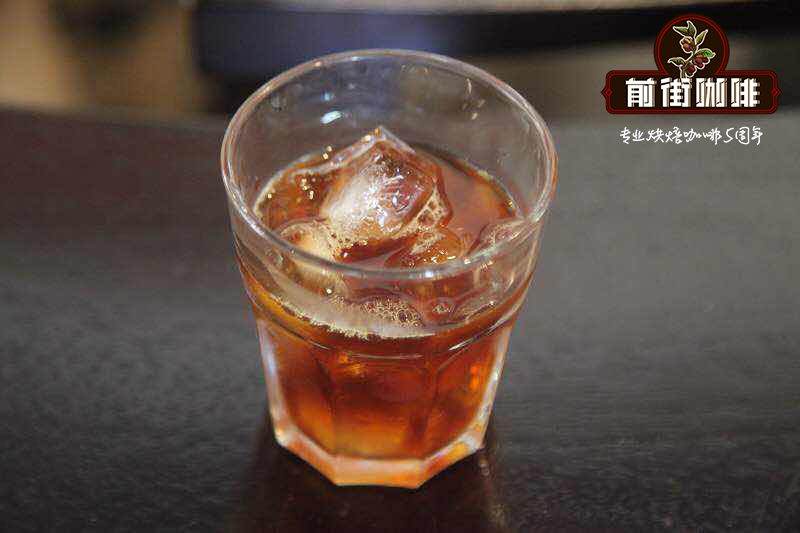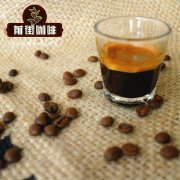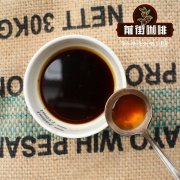Analyze what kinds of boutique coffee beans have what flavor and taste is fine coffee hand-brewed?

Professional coffee knowledge exchange more coffee bean information please follow the coffee workshop (Wechat official account cafe_style)
As a proper term, boutique coffee (Specialty Coffee) was first proposed by Ms. Erna Knustsen, who is known as the godmother of boutique coffee, in the Tea and Coffee monthly (Tea& Coffee Trade Journal) in 1974, highlighting that "only in the most favorable microclimate and soil and water can we cultivate boutique coffee with unique flavor." the aim is to distinguish it from the bulk commercial coffee on the New York Futures Exchange.
Coffee beans start from planting, are harvested and baked until the baristas finish cooking and are finally delivered to consumers. Each procedure in the middle is properly handled according to certain standards. This kind of coffee not only has a clearly identifiable flavor personality of the place of origin, but also has a high evaluation score of more than 80 points in the professional cup test, which we call fine coffee.
Before the raw coffee beans are exported, the grades must be distinguished according to the number of defects, the size of the bean body, the altitude, and the cup quality. The international commonly used raw bean grading system is made by the American Fine Coffee Association.
A, according to bean size
We often see the size of beans, that is, the size of beans. The sieve holes of beans selected by each country have a unified standard, that is, the national standard. The sieve hole diameter of 18 mesh beans is 18 ≈ 64 inches, while the diameter of sieve holes of 18 mesh beans is 18 ≈ 64 inches, and the diameter of sieve holes of 18 mesh beans is 25.4 mm. Generally speaking, bean eye refers to bean width, for example, 18 mesh means bean width is 7mm.
Bean size is only a reference, the key is the latitude and altitude of planting, large and high altitude beans are generally high-quality hard beans, such as Columbia Supremo and KenyaAA. KenyaAA is 17 AB 18 mesh, AB is 15 AA 16 mesh (the taste of AB beans is not necessarily bad, but the bean body is relatively small, I have drunk many delicious AB beans, which is not worse than AA).
B, altitude
From the size of beans, it is difficult to judge whether they are hard beans or soft beans, but altitude is indeed a good standard. Most countries in Central and South America, with the exception of Colombia and Brazil, are distinguished by the altitude at which they are planted.
The coffee grown in Costa Rica facing the Pacific Ocean above 1200 m above sea level is called extremely hard bean (SHB:strictly hard bean), followed by medium hard bean (MHB:medium hard bean) and 400-1200 m above sea level.
Guatemala is very hard bean (SHB) above sea level 1350, hard bean (HB) at 1200m and semi-hard bean (semi-hard) at 1200m and 1200m.
In Honduras, the highest grade is 1200m polar high bean (SHG:strictly high grown), followed by 900m 1200m highland bean (HG:high grown).
Even though the standard of altitude classification varies from country to country, altitude is still an accurate indicator of hardness.
C, number of defective beans
Ethiopian coffee beans, G1 for every 300g coffee, 3 defective beans, 412 G2 defective beans, 13 25 G3 defective beans, and 20 defective G4 beans. Ethiopian beans are relatively easy to identify, mostly small, thin, pointed long beans, that is, 'longberry', and often mixed with small oval-shaped short beans, that is,' shortberry','is uneven in size, although the beans look poor, they are rich in taste, such as Yirgacheffe G1.
The quality of coffee beans can be classified according to the grade of coffee beans, but the geographical location of the producing area, manor and bean species are also important factors that determine the quality of coffee beans.
If the variety of coffee is divided by biology, it can be divided into Arabica, Robusta and Liberica.
Generally speaking, Arabica is mainly used in single or boutique coffee because of its obvious aroma, floral flavor and smooth taste, while Robusta is used to make instant coffee. Although Arabica can be defined as premium coffee and Robusta as secondary, it does not have to be classified in this way, and it is more appropriate to distinguish it according to its own favorite taste. In terms of taste, the United States and Japan drink light coffee made from Arabica more often, while Europe prefers Italian concentrate made from a mixture of Arabica and Robusta.
Arabica is the earliest variety to be discovered. Arabica is considered to be the best coffee variety and the most important variety in the world at present. Arabica species are produced in Central and South American countries, Brazil, Colombia, Ethiopia, Tanzania, Yemen and Indonesia in Africa. Arabica species usually grow between 2.5 and 4.5 meters and can withstand low temperature but not frost. Drought capacity is not strong, large particles, good quality taste mellow, a little acidity and slight bitterness, accounting for about 85% of the world output.
Arabica has many variants and derivatives, grown in different countries with different flavors and tastes of beans. And fine coffee is not limited to hand-brewed coffee, just as the definition of fine coffee is not the same.
Important Notice :
前街咖啡 FrontStreet Coffee has moved to new addredd:
FrontStreet Coffee Address: 315,Donghua East Road,GuangZhou
Tel:020 38364473
- Prev

On the Myth of Fine Coffee and discussion on the definition and Standard of Fine Coffee beans
Professional coffee knowledge exchange more coffee bean information Please pay attention to the coffee workshop (Wechat official account cafe_style) boutique coffee, as the name implies, is from the beans to the cup has always maintained the highest quality coffee. It can be a concept and philosophy, and it is the foundation to ensure the long-term prosperity and development of the coffee industry chain. Boutique coffee can be defined as coming from a known producing area, with high quality and special characteristics.
- Next

A brief Analysis of the advantages of growing Coffee in Brazil, the largest producer of Coffee
Professional coffee knowledge exchange more coffee bean information Please pay attention to the coffee workshop (Wechat official account cafe_style) Coffee is a tropical plant, the planting area is on the axis of the equator. It is planted between the Tropic of Cancer at about 25 degrees north and south latitudes. This area is also known as the "bean belt" or "coffee belt", tropical highlands or mountains at an altitude of 500-2500 meters.
Related
- Beginners will see the "Coffee pull flower" guide!
- What is the difference between ice blog purified milk and ordinary milk coffee?
- Why is the Philippines the largest producer of crops in Liberia?
- For coffee extraction, should the fine powder be retained?
- How does extracted espresso fill pressed powder? How much strength does it take to press the powder?
- How to make jasmine cold extract coffee? Is the jasmine + latte good?
- Will this little toy really make the coffee taste better? How does Lily Drip affect coffee extraction?
- Will the action of slapping the filter cup also affect coffee extraction?
- What's the difference between powder-to-water ratio and powder-to-liquid ratio?
- What is the Ethiopian local species? What does it have to do with Heirloom native species?

